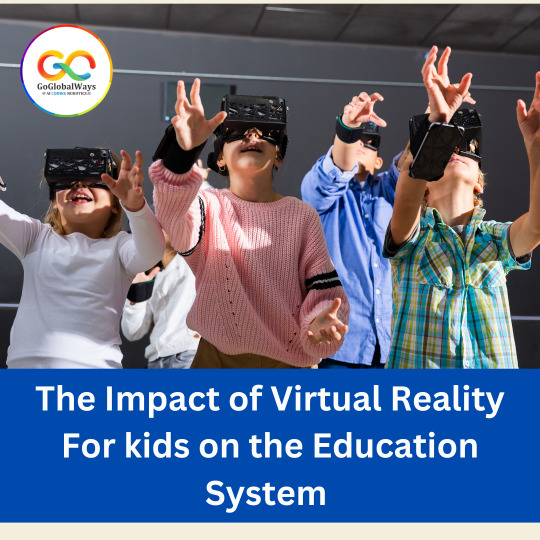#VRforKids
Text
Benefits of Learning Through Virtual Reality for Kids

Education is using new and cool ways to help kids learn better. One of these awesome tools is Virtual Reality for Kids. With its many benefits, this unique technology transforms how children play and learn. Virtual Reality for Kids lets kids do all sorts of things they couldn't do before. They can visit old places, go underwater, or even blast off into space without leaving their classroom or home. This adds an interesting and engaging element to learning. Additionally, students who use virtual reality for education have improved memory. When they feel like they're really there, they pay more attention and learn more. With the help of technology, studying can become an adventure, whether tackling challenging math problems or doing science experiments. And the best part? Virtual Reality for Kids is for everyone. It helps all kinds of kids learn in their own way and at their own speed. Kids may utilize this technology to learn and have fun wherever they are. Thus, let's embrace virtual reality for kids and give them access to countless educational opportunities!
#vrforkids#educationforkids#vr#vreducation#Virtualreality#learnnewskill#ImmersiveLearning#VirtualRealityEducation#InteractiveLearning#FutureOfEducation#VirtualAdventures#LearningThroughPlay#InnovativeEducation
0 notes
Text
Impact of Virtual Reality on Education System For Kids

Virtual reality (VR) revolutionizes education for kids by providing immersive learning experiences. It enhances engagement and retention through interactive simulations, enabling students to explore complex subjects more intuitively. VR simulations offer hands-on experiences that are otherwise impractical or dangerous, such as exploring space or dissecting virtual organisms. VR for kids fosters collaboration and communication skills as students can interact with peers and educators in virtual environments regardless of physical distance. It accommodates various learning styles, catering to visual, auditory, and kinesthetic learners alike. VR breaks down geographical barriers, granting access to educational resources regardless of location. It promotes curiosity and exploration, inspiring a lifelong love for learning. However, challenges include the need for affordable and accessible VR equipment, as well as ensuring content aligns with educational objectives. Overall, VR holds immense potential to transform education by making learning more engaging, accessible, and impactful for kids.
#VRinEducation#VirtualRealityLearning#FutureOfLearning#DigitalLearning#InteractiveEducation#STEMeducation#VRforKids
0 notes
Text
Advantages of Virtual Reality in Education for kids

Virtual Reality (VR) in education offers an immersive and interactive learning experience, revolutionizing the way kids engage with educational content. Firstly, it enhances retention by providing a multisensory environment that stimulates visual and auditory senses, making learning more memorable. VR also facilitates experiential learning, allowing kids to explore historical events, visit distant places, or dive into scientific phenomena in a lifelike setting. This hands-on approach fosters a deeper understanding of complex subjects and encourages curiosity. VR promotes inclusivity by accommodating various learning styles and preferences. It caters to visual, auditory, and kinesthetic learners, ensuring a personalized educational experience for each child. The technology also improves collaboration and social skills as students can engage in virtual group projects or simulations, irrespective of physical locations. Additionally, VR in education cultivates digital literacy, an essential skill in the modern age. Virtual reality for kids not only makes learning fun and engaging but also enhances retention, fosters experiential learning, promotes inclusivity, improves collaboration, and cultivates crucial digital literacy skills, preparing children for a technologically advanced future.
0 notes
Text
The Impact of Virtual Reality for kids on the Education System

Virtual Reality for kids has the potential to revolutionize the education system by providing immersive and interactive learning experiences. It enhances engagement, making education more captivating and enjoyable for children. VR can transport students to historical events, far-off places, or even inside the human body, facilitating experiential learning. This technology fosters a deeper understanding of complex subjects and promotes critical thinking skills. Moreover, VR can address individual learning styles, catering to diverse needs in the classroom. It encourages collaboration and social interaction, even in remote settings, fostering teamwork and communication skills. However, concerns about potential negative effects, such as health and safety considerations, screen time, and content appropriateness, must be carefully addressed to ensure a balanced and responsible integration of VR into education for children. Overall, when used responsibly, VR holds tremendous promise in transforming the educational landscape for kids.
0 notes